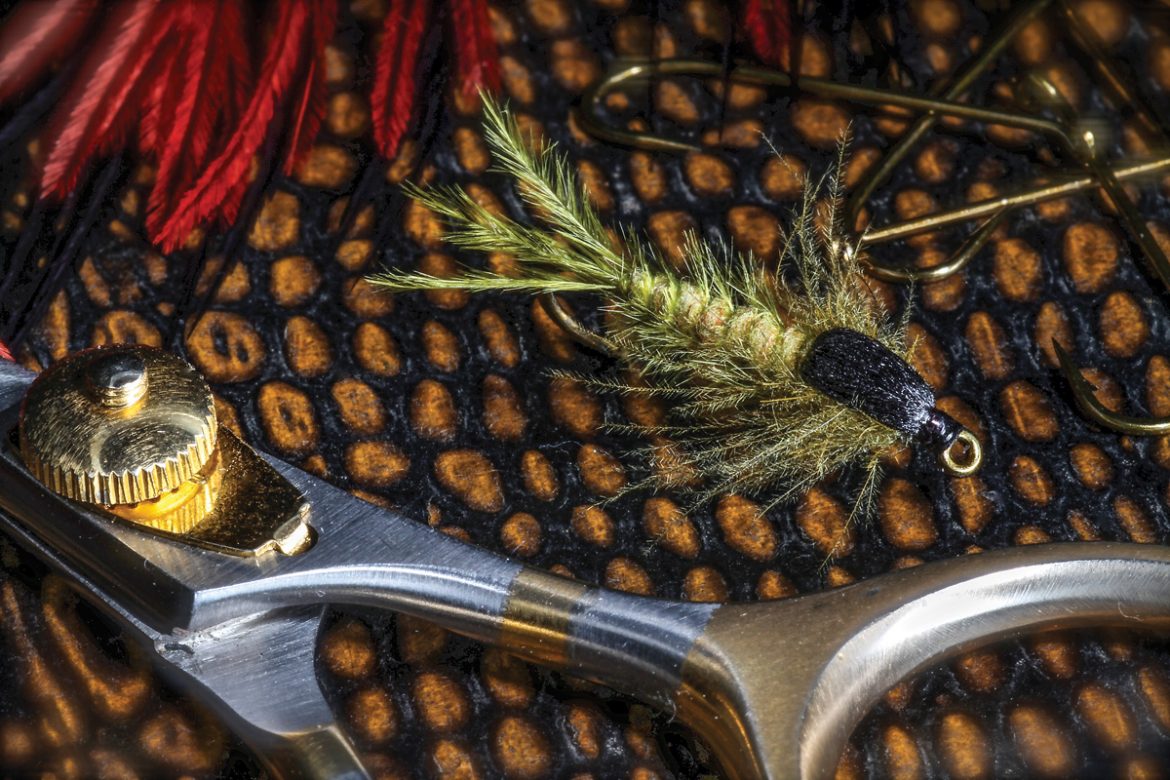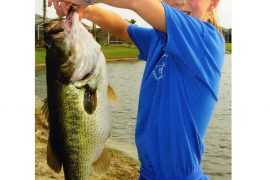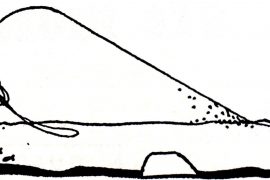
Tie a winning imitation of the hexagenia nymph and other monster bugs using ordinary tying skills and common materials.
[by Barry Clarke]MANY NYMPH PATTERNS IMITATE A WIDE SPECTRUM OF AQUATIC FOODS rather than the larval stages of specific insects. This fly, however, imitates the final nymph stage of the largest burrowing mayflies: Ephemera guttulata (green drake), Ephemera simulans (brown drake), and the European relatives Ephemera danica and vulgate. These beefy nymphs prefer living in soft organic, or sandy and muddy bottoms. They can live there, more or less buried, for up to several years, appearing only occasionally to feed on decomposing plant matter. They have been known to burrow as far as 50 feet deep into the bottom!
These large insects range from 12 to 32 millimeters long. They are easily recognized by the breathing gills along the sides of their abdomens, and they have oversized forelegs for burrowing. In addition to breathing, the gills function as a ventilation system for their tunnels. Their gills keep water flowing through the tunnels, which in turn keeps them open. If a nymph leaves its burrow or stops the undulating movement of its gills, the tunnel will collapse.
For most of their lives, these unique nymphs are unavailable to the trout. When the time is right, however, they leave the safety of their burrows and swim quickly to the surface with…





